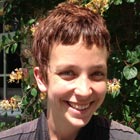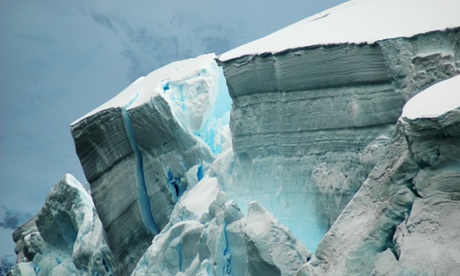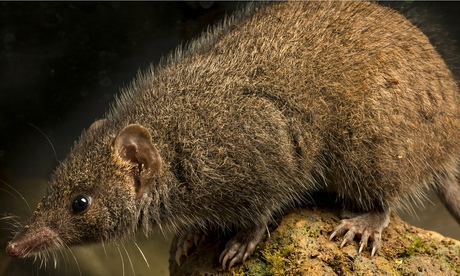1 World Health Organisation declares a public emergency of international concern over Zika
1 February
In global health, 2016 will be remembered as the year a little known virus made a major impact. It felt strangely familiar, but this time it wasn’t Ebola making headlines around the world, it was Zika – a mosquito-borne virus being linked to a huge spike in the number of babies in Brazil born with brain defects. When the World Health Organisation declared that the cluster of microcephaly cases and other neurological disorders were a public health emergency of international concern, it was a rallying cry for the international community to respond. The announcement triggered investment in mosquito control efforts and vital funding for research into the virus and its devastating health consequences. This allowed for the scale-up of initial efforts already under way by institutions including the London School of Hygiene and Tropical Medicine.
For me, this response also showed that the international community had learned important lessons from the Ebola crisis, and was determined to act more rapidly before the situation spiralled out of control. As 2016 draws to a close, our knowledge of the virus has increased and potential vaccines are in the pipeline.
But Zika transmission by mosquitoes has now been reported in 75 countries and we are still a long way from fully understanding and controlling this virus.
Professor Peter Piot, director of the London School of Hygiene and Tropical Medicine
2 SpaceX demonstrates a big step towards fully reusable space craft
8 April
It was an incredible achievement for SpaceX. The first stage rocket of one of its Falcon 9 launchers, having successfully lofted cargo to the International Space Station, managed to turn itself around, bleed off the enormous kinetic energy it had acquired while its main engines were burning, fly back down to Earth and land vertically – with balletic precision – on a rather tiny looking robotic barge floating somewhere in the Atlantic.
There are many reasons to love this moment. For the sheer audacity of it; for the uncontrollable roar of celebration that erupted in the control room at the moment of touchdown; for the promise that it might prove a game changer in the world of space exploration; for the fact that they named the drone ship on which the landing happened Of Course I Still Love You after a sentient AI spacecraft that featured in one of the late great Iain M Banks’s sci-fi novels. But most of all because Arthur C Clarke once said that any sufficiently advanced technology would be indistinguishable from magic and on 8 April the successful touchdown of Flight 23’s first stage looked a lot to me like magic.
Kevin Fong, clinical lead at the Centre for Altitude Space and Extreme Environment Medicine
3 Portugal is entirely powered by renewable energy for four days
7-11 May
The high point for me this year from an engineering perspective was the announcement by Portugal that the entire country’s electric usage had been provided by renewables for four consecutive days in early May. Moving away from fossil fuels to renewable energy is surely the most important engineering and scientific challenge of our age. The shift to coal in the 19th century and then to oil in the 20th century gave us the modern world of cheap energy, plentiful food, consumer goods and sunny holidays. If we want to prevent climate change while allowing our children to have these things too, then we must wean ourselves off fossil fuels. It seems unthinkable, it seems impossible, but impossible is what engineering does best. Portugal’s achievement gives governments and energy companies a tangible example of how it can and does work, and why they should be investing in solar, wind, wave and other renewable technologies now.
Mark Miodownik, professor of materials and society, UCL
4 New reserves of helium discovered
28 June
It might seem odd to get excited by a new supply of the second most abundant element in the universe. But in June this year, a collaboration between universities and industry announced that it had discovered a huge reserve of helium gas in Tanzania, using a new exploration technique. Helium is a very small unreactive atom, which makes it spectacularly useful for cooling magnets (in MRI scanners, for example) and as an inert atmosphere for manufacturing semiconductor chips. It’s an essential tool for our modern world. But that tiny size means that it’s easily lost from the atmosphere, and we are reliant on finding trapped pockets of it buried deep underground. The known reserves are limited, and this discovery is huge news. It means that as amazing new ideas come along and our society pushes to make use of them, we won’t be limited by lack of this tiny workhorse.
Helen Czerski, research fellow in the department of mechanical engineering at UCL
5 Confirmation of the discovery of a nearby habitable planet
24 August
We’ve discovered in recent years that many stars – perhaps even most of them – are orbited by retinues of planets, like the sun is. The night sky has become hugely more interesting.
We’re specially interested in possible “twins” of our Earth – planets the same size as ours, on orbits with temperatures such that water neither boils nor stays frozen – the so-called “habitable zone” . It’s estimated that our Milky Way galaxy contains billions of such planets.
This year there’s been further excitement. It’s been realised that even more planets may be orbiting very small faint stars. The nearest star, Proxima Centauri, has a planet orbiting it not much bigger than Earth. Its “year” is only 11 days. But it’s in the habitable zone because Proxima Centauri is a red dwarf star about 100 times fainter than the sun. And there’s hot news that a similar star, 40 light years away, may have three planets in its habitable zone.
These planets are “habitable” – but that of course doesn’t mean they are inhabited. We eagerly await telescopes that can analyse the faint light from these planets, seeking evidence for a biosphere. And these discoveries are stimulating searches for advanced (even intelligent) life – though this remains a long shot.
Martin Rees, astronomer royal
6 Our last universal common ancestor gets a makeover
25 July
The Tree of Life was redefined in April, now looking like a jagged explosion, its central node representing a thing we call Luca – the last universal common ancestor. Our presence in this grand view of life is not significant enough to warrant a label, as almost every bough of this tree is a type of bacteria. Amazingly, many of these cells are yet undiscovered, but known only by our finding their DNA, and it being different from all others.
Luca is not the origin of life, but the thing from which all life is derived. Luca also got a makeover in July with a dazzling new portrait by Düsseldorf-based biochemist Bill Martin. By tracking back DNA in branches of other single-celled creatures, he drew up a list of 355 genes that tell us how Luca made its living – deep in the metal-rich gassy hydrothermal vents of an ancient ocean floor, the root of life on Earth.
Adam Rutherford, geneticist and presenter of Radio 4’s Inside Science
7 The legacy of a celebrated neuroscientist is contested
9 August
In 1953, Patient HM had experimental brain surgery that left him with striking amnesia. Decades of subsequent research with HM by neuropsychologist Suzanne Corkin made a major contribution to our understanding of memory.
Corkin died this year but shortly after, journalist Luke Dittrich published a book claiming Corkin buried inconvenient findings, shredded files, and acted unethically in gaining HM’s consent. Subsequently, 200 neuroscientists wrote to the New York Times to protest at a “biased and unfair attack”. Corkin’s institution, MIT, stated nothing was shredded, and claims of “burying findings” turned out to be indistinguishable from a typical scientific spat.
But Dittrich then released audio of Corkin saying she had shredded files and the ethical issues remain unresolved. In many ways, this has been a standard debate about a scientist’s legacy but, so soon after Corkin’s death, passions have run too high for a cool consideration. Undoubtedly, it will come in time.
Vaughan Bell, clinical senior lecturer, Faculty of Brain Sciences, UCL
8 Greenland sharks live for a very long time
11 August
On our increasingly human-dominated planet we can still learn much from the lives of other species. The discovery this year that the Greenland shark lives for 400 years, making it the longest-living vertebrate, puts our hectic lives into perspective. Perhaps we could pick up some tricks from the frigate birds that were found to sleep for only about 40 minutes a day while on their 10-day nonstop flights across oceans. But all this is put into a stark perspective by the latest readout from the WWF Living Planet Report. This records that over just the past 40 years, a timescale that represents the kindergarten years of a Greenland shark, the number of wild vertebrates on Earth has been reduced by 58%, surely putting the future of many of these species into question.
Georgina Mace, professor of biodiversity and ecosystems, UCL
9 CO2 in the Earth’s atmosphere passes 400 parts per million
28 September
In climate science, we work in 30-year averages, so 30 years is one data point. Four data points ago, in 1896, atmospheric CO2 concentrations were 295 parts per million (ppm). Svante Arrhenius made the first global warming predictions, looking forward to a gentle heating of his chilly homeland Sweden. Two data points ago, in 1957, Charles Keeling began measuring CO2 concentrations and discovered a rapid rise, by 20ppm. In 2016, CO2 levels had risen a further 85ppm over the same time period and were officially announced as 400ppm: the highest in 3m years. Back then, in the Pliocene era, the world was warmer and sea levels were much higher. We don’t know how fast the planet changed, but we know we don’t want to risk seeing it again in future. One data point from now, in 2046, we’re on track to have burned more than a trillion tonnes of carbon and to have reached last year’s Paris agreement target: 1.5C-2C warming. What future do we want to see after that?
Tamsin Edwards, lecturer in environmental sciences, Open University
10 A bad marriage can lead to an early death
1 October
Next time you’re on the verge of picking a fight with your partner, pause and consider the findings of a study published in October. This research involves a large longitudinal study of emotion in interactions within married couples. They get couples into the lab and looking at their stress levels while they have “difficult” conversations, finding that couples that deal with stress with positive emotions like laughter become less stressed, and tend to stay together for longer. This year they looked at the use of negative strategies such as anger or stonewalling responses to conflict, and found that these predicted health-related changes over time in specific ways. The use of anger predicted cardiovascular problems, and “stonewalling” musculoskeletal problems such as bad backs. These relationships were found even after lifestyle factors were controlled for, and were more pronounced in men. Most strikingly, these physical effects were not there at the start of the study, but developed over 20 years. This is an extraordinary demonstration of the health effects of negative emotions.
Sophie Scott, professor of cognitive neuroscience, UCL
11 Arctic and Antarctic sea ice volumes both fall to an all-time low
17 November
This year saw the arrival of the long-awaited El Niño, the periodic shift in warm water across the Pacific that brings torrential rain to Central and Latin America and drought to parts of Asia and Africa. Planetary temperatures spiked, putting an end to talk of a “pause”. Yet summer melting of Arctic ice broke no records. But in October, unprecedented weather patterns drove icy winds across Siberia, pushing Arctic temperatures up to 20C above normal and parts of the Arctic Ocean failed to refreeze; in the Antarctic, sea ice thawed faster than usual. For me the bombshell came from a Dutch blogger in late November: a plot of the Arctic plus Antarctic showed sea ice this autumn to be tracking 4m km2 (the size of western Europe) below the normal average. This is a 7-sigma event – with a chance of about one in a hundred billion of being random. The ice doesn’t lie. If we don’t take this seriously now, our children will ask us why.
Andrea Sella, professor of materials and inorganic chemistry, UCL
12 Scientists modify photosynthesis to boost crop yield
18 November
Producing enough food for a growing population in the face of extreme weather associated with climate change without using environmentally damaging methods is a trickier balancing act than the Brexit negotiations! But last month scientists at Illinois University made a breakthrough that could herald a second green revolution for world agriculture – they improved the efficiency of photosynthesis, the process by which plants turn sunlight into the biomass that is the source of all our food. The team used mathematical models to show that increasing the speed at which leaves adapt to shade could potentially raise crop yields. They turned this theory into reality by boosting the expression of the genes responsible and crucially showed this worked in agricultural fields, with a 15% increase in productivity.
The work, published in Science, is the culmination of decades of effort to understand the 140 processes underpinning photosynthesis. It demonstrates the value of long-term interdisciplinary collaboration and offers proof of concept for a new approach to environmentally sustainable increases in crop productivity, something that could improve the lives of millions. So it’s my pick for science moment of the year, if not the decade.
Prof Sue Hartley, director, York Environmental Sustainability Institute, University of York















